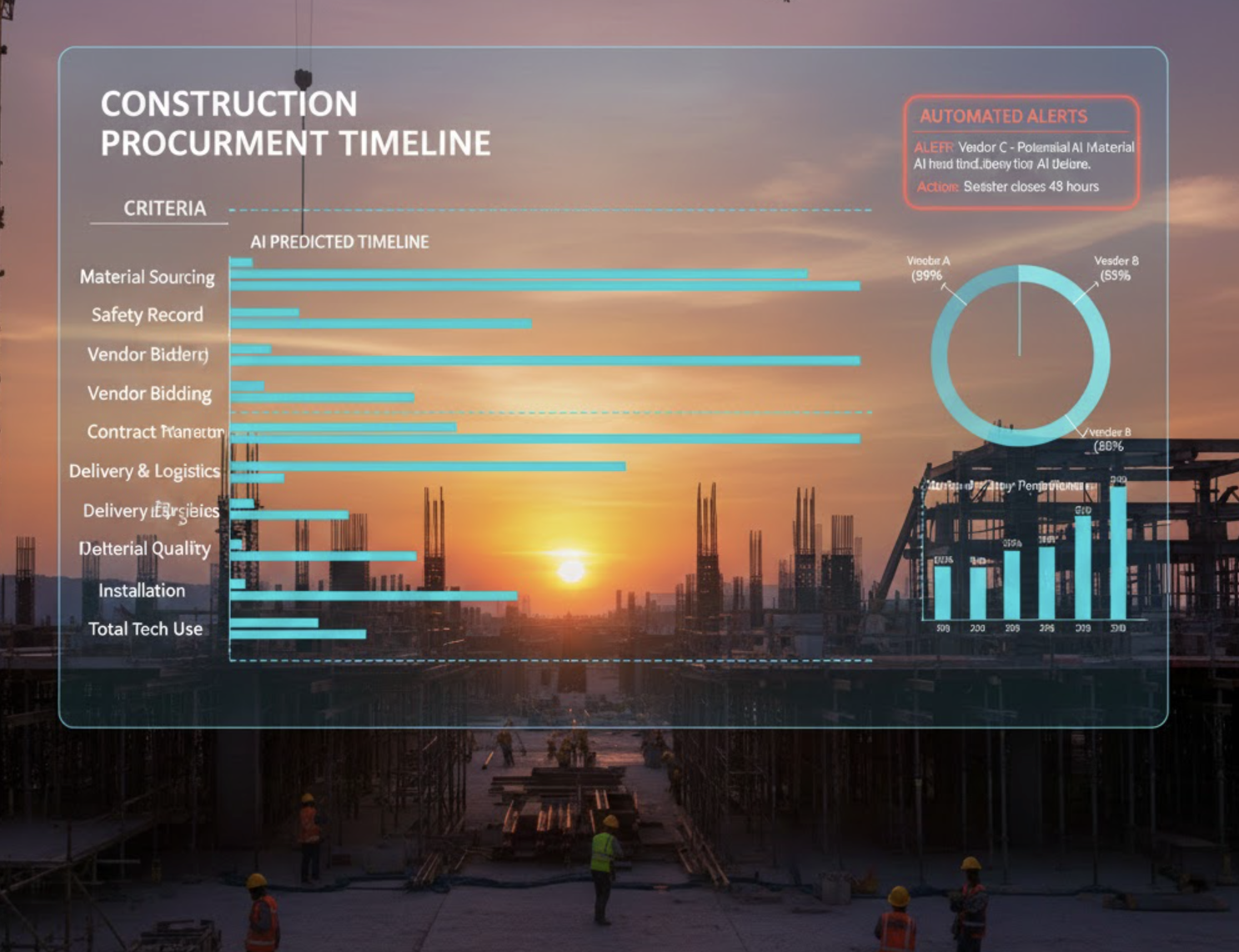Scope Creep in the Middle East: How to Control It with Clear Digital Logs
Scope creep can significantly derail construction projects, particularly in the dynamic environments of the Middle East. Managing this issue effectively necessitates utilizing advanced construction project management software, such as Zepth. By implementing clear digital logs, firms can enhance their construction risk management and streamline communication among stakeholders. In this blog, we will delve into the definition, causes, and strategies for controlling scope creep along with best practices and the specific role Zepth plays in mitigating these challenges.
Understanding Scope Creep
Definition and Impact
Scope creep refers to the uncontrolled growth in a project’s scope after it begins, leading to the addition of new objectives or tasks without corresponding adjustments to the project’s time, budget, or resources. This expansion can result in delays, budget overruns, and compromised quality of deliverables. It is crucial for construction managers and stakeholders to recognize the signs of scope creep early on to prevent these negative impacts.
Common Causes of Scope Creep in Construction Projects
Poorly Defined Project Scope
A vague project statement of work can lead to misunderstandings among stakeholders, increasing the risk of scope creep. Clear and detailed project scope definitions are essential to mitigate this risk. Engaging with stakeholders during the planning phase helps in establishing unambiguous deliverables.
Unsupervised Changes
Changes to the project plan made without formal control methods can rapidly lead to scope creep. A unified approach to decision-making and change management is crucial. Utilizing tools like construction submittal software can help establish structured procedures for managing changes effectively.
External Changes
Regulatory changes, site conditions, and evolving client demands can significantly modify a project’s scope. For instance, unexpected changes in building codes or site conditions can lead to costly alterations. It’s vital for project managers to stay attuned to external influences and adjust plans accordingly.
Communication Issues
Inadequate communication among team members can exacerbate misunderstandings and lead to unapproved changes, further adding to scope creep. Effective communication strategies are vital. Using jobsite management tools that facilitate real-time updates can bridge this communication gap, thereby aligning team efforts.
Strategies to Control Scope Creep
Clear Project Definition
Begin with a well-defined project scope, objectives, and deliverables. Engage stakeholders to ensure a shared understanding of project expectations. This helps in setting clear boundaries and expectations from the outset. Use construction document management systems to maintain accurate and accessible project records.
Stakeholder Engagement
Involve stakeholders from various departments and levels in project planning to gather diverse perspectives and align expectations. This ensures that all parties are on the same page and reduces the likelihood of scope creep, promoting a more collaborative project environment.
Effective Communication
Establish open lines of communication with stakeholders to keep them informed about project progress, changes, and challenges. Tailor communication strategies to respect local customs and cultural norms in the Middle East. Such insightful communication fosters a culture of transparency and trust.
Change Management
Develop a change management plan to handle unexpected changes effectively and minimize their impact on the project scope. This includes formal processes for approving and documenting changes. Leveraging advanced construction analytics and insights tools can facilitate better decision-making during these transitions.
Risk Management
Identify potential risks and uncertainties specific to the Middle Eastern context. Create contingency plans to address these risks if they arise. This proactive approach helps in mitigating the impact of external changes, enhancing overall project resilience.
Local Expertise
Utilize local expertise to navigate the unique cultural, regulatory, and logistical challenges of the Middle East. This can include partnering with local consultants or hiring staff familiar with the regional context, ensuring adherence to local compliance standards and facilitating smoother project execution.
Role of Digital Logs in Controlling Scope Creep
Advanced project management tools, such as those provided by Zepth, play a crucial role in controlling scope creep. Here’s how:
- Clear Digital Logs: Maintaining detailed and transparent digital logs of all project activities, changes, and decisions can help track and manage scope changes effectively.
- Automated Change Management: Use digital tools to automate change management processes, ensuring that all changes are formally approved and documented.
- Real-Time Communication: Utilize digital platforms for real-time communication among stakeholders, reducing the risk of misunderstandings and unapproved changes.
- Risk Monitoring: Employ digital tools to monitor and manage risks proactively, helping to mitigate the impact of external changes.
Use Cases and Best Practices
A comprehensive mixed-use compound in Hamala, Bahrain, involved the construction of multiple buildings with diverse functionalities. Successful completion of this project highlighted the importance of clear project definition, stakeholder engagement, and effective change management in preventing scope creep.
Best practices for managing scope creep involve engaging in careful planning, involving stakeholders early, and maintaining open communication channels. Be culturally sensitive and proactive in managing changes and risks. Use digital tools to enhance transparency and control over the project scope. For example, Zepth’s Document Register ensures centralized document access and version control to keep all teams aligned.
How Zepth Can Help
Zepth offers advanced project management tools that aid in defining and managing project scope clearly. Here’s how:
- Project Management Tools: Zepth’s platform includes features for automated change management, real-time communication, and risk monitoring.
- Digital Logs: Zepth facilitates the creation and maintenance of clear digital logs, ensuring all project activities and changes are tracked effectively.
- Stakeholder Engagement: By providing a unified platform for communication and collaboration, Zepth enhances stakeholder engagement.
- Risk Management: Zepth’s risk management features assist in identifying and mitigating potential risks, ensuring projects stay on track and within scope.
To explore how Zepth can revolutionize your approach to construction project management and control scope creep, visit Zepth’s website.




